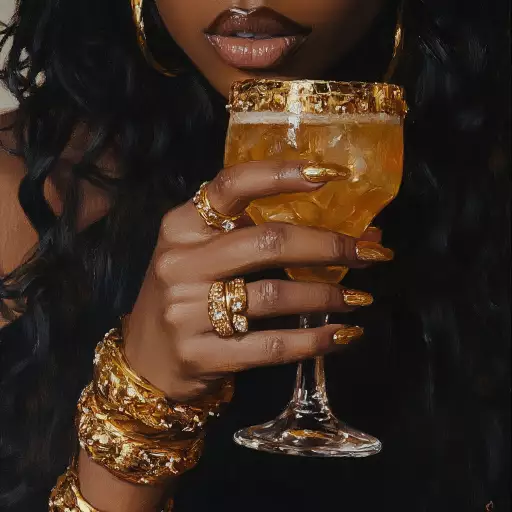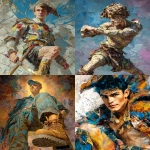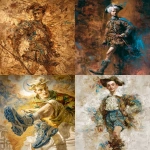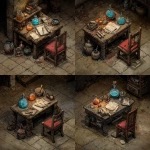Explore the Best AI Image Gallery

The Artists Toolkit: How AI-Generated Visual Content is Transforming the Creative Industry
The creative landscape is undergoing a seismic shift with the emergence of AI-generated visual content. This powerful technology, capable of producing stunning images, videos, and designs, is reshaping how we create, consume, and interact with art. From revolutionizing advertising to empowering independent artists, AI-generated visuals are leaving their mark across diverse industries.
Unlocking Creative Potential: Applications Across Industries
AI-powered tools offer a plethora of applications that are redefining creative workflows:
- Marketing and Advertising: Generate eye-catching visuals for campaigns, personalize marketing materials, and create engaging social media content at scale.
- Design and Illustration: Accelerate the design process by generating concepts, exploring variations, and producing high-quality illustrations for books, websites, and products.
- Film and Animation: Create realistic backgrounds, characters, and special effects, streamlining animation pipelines and enabling independent filmmakers to bring their visions to life.
- Gaming: Generate immersive game environments, dynamic assets, and unique character designs, enhancing gameplay experiences and reducing development time.
- Education and Research: Visualize complex data, create interactive learning materials, and explore scientific concepts through compelling visuals.
Empowering the Individual Creator
AI-generated content tools are democratizing creativity by empowering individuals with limited technical skills to produce professional-quality visuals. This opens up exciting opportunities for:
- Independent Artists: Explore new creative avenues, experiment with diverse styles, and bring their artistic visions to fruition without relying on expensive software or specialized training.
- Small Businesses: Create compelling marketing materials, build brand identity, and enhance online presence without needing a dedicated design team.
- Students and Educators: Engage in hands-on learning experiences, explore creative concepts, and visualize ideas with ease.
Navigating Ethical Considerations
The rise of AI-generated content raises important ethical considerations that require careful attention:
- Copyright and Ownership: Establishing clear guidelines for intellectual property rights in AI-generated works is crucial.
- Bias and Representation: Ensuring fairness and diversity in AI algorithms to prevent the perpetuation of harmful stereotypes.
- Transparency and Accountability: Making it transparent how AI systems generate content and holding creators accountable for its use.
- Misinformation and Deepfakes: Addressing the potential for misuse in creating realistic but fabricated content that can spread misinformation.
Future Trends: A Glimpse into the Evolution of Creative AI
The future of AI-generated visual content holds immense promise:
- Hyper-Personalization:** Creating tailored visuals that resonate with individual preferences and needs.
- Real-Time Content Generation: Producing dynamic visuals in real time, responding to user interactions and changing environments.
- Enhanced Collaboration: Enabling seamless collaboration between human artists and AI systems, fostering a symbiotic relationship where each enhances the others capabilities.
- New Artistic Expressions: Exploring innovative art forms and creative mediums powered by AI, pushing the boundaries of imagination.
Conclusion
AI-generated visual content is transforming the creative industry, empowering individuals, streamlining workflows, and opening up exciting new possibilities. As this technology continues to evolve, it will be crucial to navigate ethical considerations responsibly and harness its potential to foster creativity, innovation, and artistic expression.
](https://images.ai-img.art/thumbnails/150/8c3bd422d50d35735d8fb33bd314a79e30e5b150129d5d09bdad822a2007593f.webp)

](https://images.ai-img.art/thumbnails/150/3a60737a5b67fa252207ad1ae6db245a26284f53fb5846996bb34515b39ff269.webp)









](https://images.ai-img.art/thumbnails/150/1614d64dd7156c95db952258978be809eb3db8cea4453fec69c49cbdfe63fa94.webp)